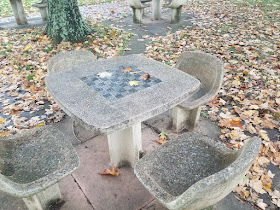On a cold, snowy January afternoon in 1982, afternoon traffic is struggling to get out of Washington, DC. Six inches of snow has fallen on the area and downtown is almost paralyzed. Washington National—which wouldn't be named after Reagan for another 16 years, since Reagan was only finishing his first year as President at the time—was barely functional.
In the icy mess, Air Florida Flight 90 reaches the end of a chain of weak links. Unbeknownst to the crew or anyone else, one of the deicing teams' fluid wasn't the proper mixture, so one of the 737's wings didn't get the protection from the bitter elements it was supposed to be getting. The crew had little experience in harsh winter conditions, since they worked for a Florida airline.
As they push the thrust levers forward, the final nail is pounded into their coffin: the iced-up engine probes relay false information about the power the engines are putting out, making them think they are at takeoff power when they are actually well below it. All of the holes in Reason's Swiss cheese model have lined up, and barely 90 seconds later, they crash into the 14th Street Bridge.
 |
| Diagram from the official NTSB report. |
Only six people on board survive the impact. They would cling to the wreckage for over twenty minutes as a U.S. Park Police helicopter scrambles to locate them in the wintry weather. One of them would end up succumbing to the icy water and drown before they could be rescued. Three of them manage to fight off hypothermia just long enough to hold on to the rescue rope and be brought on the chopper.
"The other two survivors required hands-on rescue," the NTSB report noted. "[O]ne was pulled aboard the helicopter skid by the helicopter crewman, the other was rescued by a civilian bystander who swam out and pulled her ashore."
That civilian bystander was a man by the name of Lenny Skutnik. Shortly afterward, Ronald Reagan would give his first State of the Union address as President, and would mention him in it:
Just 2 weeks ago, in the midst of a terrible tragedy on the Potomac, we saw again the spirit of American heroism at its finest—the heroism of dedicated rescue workers saving crash victims from icy waters. And we saw the heroism of one of our young government employees, Lenny Skutnik, who, when he saw a woman lose her grip on the helicopter line, dived into the water and dragged her to safety.
 |
| Yes, that is Nancy Reagan applauding for him. (Screenshot from C-SPAN's video of the speech. His mention starts at 57:40.) |
But he was not the only hero on the Potomac that deadly day. The person I mentioned above that drowned before they could be rescued was Arland D. Williams, Jr., who selflessly helped the other survivors get rescued first. In his honor, the 14th Street Bridge that was the scene of the crash and the heroism afterward would be renamed the Arland D. Williams Memorial Bridge three years later.
Next week, I have a HUGE announcement about a new series that will become a book! See you next Wednesday!
Like Larry the Flying Guy on Facebook:
Follow @Lairspeed
The author is an airline pilot, flight instructor, and adjunct college professor teaching aviation ground schools. He holds an ATP certificate with ERJ-145 and DHC-8 type ratings, as well as CFI, CFII, MEI, AGI, and IGI certificates, and is a Master-level participant in the FAA's WINGS program and a former FAASafety Team representative. He is on Facebook as Larry the Flying Guy, has a Larry the Flying Guy YouTube channel, and is on Twitter as @Lairspeed.
It takes hours of work to bring each Keyboard & Rudder post to you. If you've found it useful, please consider making an easy one-time or recurring donation via PayPal in any amount you choose.





















